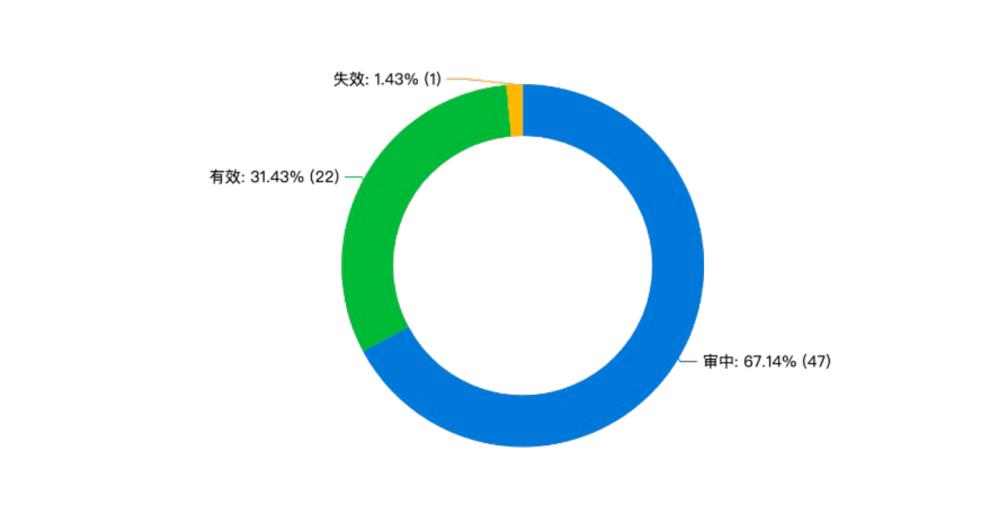"Science and Technology Innovation Board Daily" (intern researcher Ou Xu), recently, according to Tianyancha, Shanghai Jita Semiconductor Co., Ltd. underwent industrial and commercial changes on December 31, 2021, and the new shareholders include Hubei Xiaomi Yangtze River Industry Fund Partnership (limited partnership), China Internet Investment Fund (limited partnership), China State-owned Enterprise Structural Adjustment Fund Co., Ltd., Shanghai Pudong Haiwang Tower Core Private Equity Fund Partnership (limited partnership), Huichuan Technology, etc.
Jita Semiconductor is a wholly-owned subsidiary of BGI Semiconductor, is a characteristic process integrated circuit chip manufacturing enterprises, focusing on analog circuits, power devices required for the characteristic production process research and development and manufacturing, the production of BCD, IGBT/ FRD, SGT/ MOSFET, TVS, SiC devices and other chips widely serve the automotive electronics, industrial control, power management, intelligent terminals and even rail transit, smart grid and other high-end application markets.
According to the wisdom bud data, there are 70 non-appearance patents of Jita Semiconductor, accounting for 100.00%, of which 67 are invention patents, 3 are utility models, and the patent research and development technology performance is excellent; the patents under review account for 67.14%, and the recent innovation vitality is very high.

Since 2014, Jita Semiconductor has mainly focused on semiconductors, IGBTs, oxide layers, polysilicon, epitaxial layers and other technical fields.
Prior to this, Jita Semiconductor had obtained RMB 8 billion in strategic financing, led by BGI Semiconductor, and other investors included CLP Smart Fund, Guojie Double Hundred Fund, Guoji Fund, China Internet Investment Fund, SHANGYI Capital of SAIC, Huichuan Technology, Skyworth Investment, Xiaomi Yangtze River Fund, BOCOM Investment, Shanghai Free Trade Zone Fund, Lingang New Area Science and Technology Innovation Fund, Pudong Kechuang, Shanghai Puke Investment, CITIC Industry Fund, CICC Capital, Guoce Investment, AVIC Production And Investment, China Insurance Investment, Kaihui Fund, CITIC Construction Investment Capital, Guotai Junan, Shenzhen Investment Holdings, Shanghai Guosheng, Lingang Group, etc.
The problem of car core shortage needs to be solved
According to the official statement of BGI Semiconductor, the previous financing will help Jita Semiconductor to give full play to its own manufacturing advantages in vehicle-grade chips, increase the research and development of manufacturing processes such as vehicle-grade power management chips, IGBTs and silicon carbide power devices, accelerate the improvement of automotive electronics manufacturing capacity, further consolidate and develop The manufacturing advantages of CTA in the field of automotive-grade simulation and power devices, achieve the goal of becoming China's leading characteristic process production line, support China's "double carbon" strategy, and alleviate the dilemma of automotive electronic shortages.
At present, according to the data of the China Association of Automobile Manufacturers, the number of car chips required for traditional fuel vehicles is 600-700pcs/vehicle; while the number of car chips required for electric vehicles will be increased to 1600pcs/vehicle, and the chip demand for the new generation of ideal cars has reached 1700pcs/vehicle, which is 3 times the original.
Gartner data shows that in the field of new energy vehicles, the average value of semiconductors for mild hybrid vehicles is $475 per unit, plug-in hybrid vehicles at $740 per unit, and pure electric models at $750 per vehicle. Gartner also predicts that the global automotive semiconductor market will increase from $38.7 billion in 2020 to $82.6 billion in 2025, with a compound annual growth rate of 16.4%.
IGBT may become critical
According to the current forecast of the growth trend of new energy vehicles exceeding expectations, the domestic market size of IGBT is expected to grow from $280 million in 2019 to $2.974 billion in 2025, with a compound annual growth rate of 58.8%, and IGBT will become the most demanded category in the field of automotive semiconductors.
New energy vehicles represented by electric vehicles, electrification management has become the main variable of automobile transformation, and subsequently, after the electrification of automobiles, thermal management systems, charging inverter systems, motor drive control systems, etc. will add a large number of power device demand, and IGBT has become the main incremental chip for automobile electrification.
IGBT (Insulated Gate Bipolar Transistor, insulated gate bipolar transistor) is a composite power semiconductor device composed of BJT and MOSFET, which has the advantages of fast switching speed, high input impedance, small control power, simple driving circuit, small driving power, and small switching loss, and the advantages of low BJT on resistance, large on-state current, and small loss, which are acquainted with AC/DC conversion, power regulation, Vehicle air conditioning and other aspects have applications.
It is understood that IGBT and IGBT modules account for 50% of the drive system in the cost structure of new energy vehicles, accounting for 8-10% of the total vehicle cost, which is the highest cost single component in new energy vehicles.